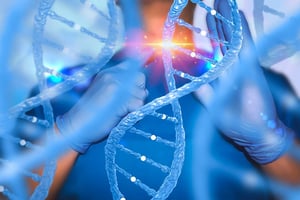As explained in biology books, the genetic code known as DNA present in every cell forms an elegant double spiral, or double helix shape. But beyond this classic, largely predominant shape, there are also others which can form temporarily. One of these, a type of knot with four strands, has recently been isolated in living cells for the first time. Until now, it had only been observed in experimental conditions, and the hypothesis was that it did not exist in nature. However, it does exist, and it might have an important role. It was identified through the extremely sophisticated techniques used by the geneticists and microscopy experts at the Garvan Institute of Medical Research in Darlinghurst, Australia, who published their results in the Nature Chemistry journal. In the knot-shaped structure one of the strands of the double helix is “entangled” and previously unknown pairings between the cytosine in its interior can be observed.
Perhaps this is the moment to recall that each of the two strands of DNA which make up the double helix are made up of four types of fundamental elements: cytosine, guanine, adenosine, and thymidine. In the classic shape of the double helix the two strands are found on opposite sides, and are connected by following the sequence of adenosine-thymidine and cytosine-guanine. In the knot structures, however, “anomalous” pairings of cytosine-cytosine are found within the same strand. Why does this happen? The researchers hypothesize that the knot might be used by the cell when it duplicates itself, but only in those first moments, to read the gene sequences more efficiently.
It is significant that the knot-shaped DNA forms were found primarily in the areas of the gene code which regulate cellular replication and in the telomeres, the end-sections of chromosomes, which tend to shorten each time the cell duplicates itself and which represent a type of marker for aging. In fact it is not easy to understand the function of these “new” sections of DNA, but this type of research is important for deeper understanding of how cells work, and of what happens when new observations are made. The studies are ongoing. To find out more, click here.

